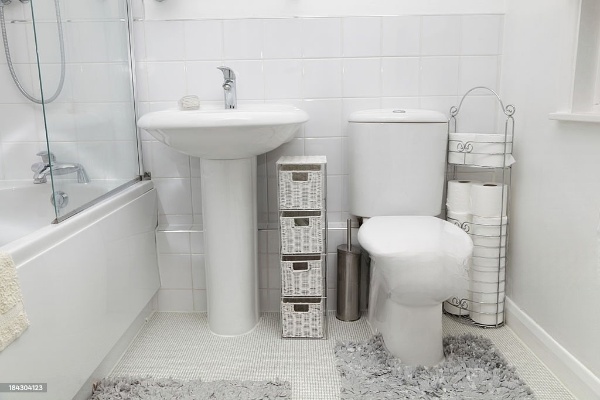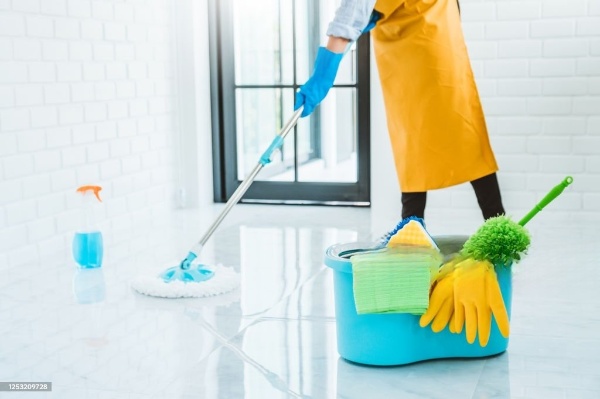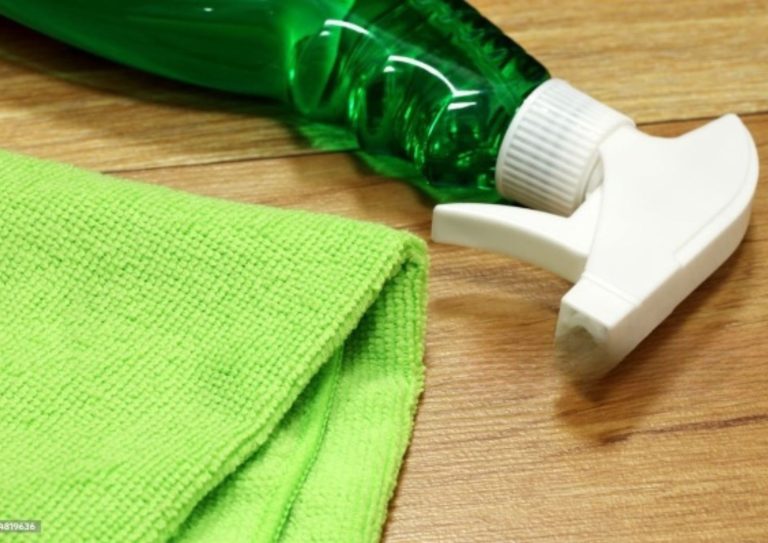Introduction
Keeping a home clean can feel like an endless chore, but deep cleaning takes it to the next level. Tackling accumulated grime, dust, and clutter requires a thorough approach. This guide simplifies the process into manageable tasks, ensuring every corner of your home sparkles. Say goodbye to the mess and hello to a pristine living space!
1. Declutter and Organize
Before diving into deep cleaning, decluttering is essential. Start by sorting items into keep, donate, and discard piles. Use storage solutions like bins and shelves to keep things organized. A tidy space sets the stage for effective cleaning. Decluttering not only makes cleaning easier but also helps create a more serene environment by reducing visual noise.
Photo by AndreyPopov via iStock
2. High-to-Low Dusting
Begin cleaning from the top and work your way down. Dust ceiling fans, light fixtures, and shelves before moving to lower surfaces. This method ensures you capture falling dust, preventing recontamination of already cleaned areas. Using an extendable duster can make reaching high places easier and more efficient. Remember to dust walls and corners where cobwebs can accumulate.
Photo by Prostock-Studio via iStock
3. Window and Window Treatment Care
Clean windows inside and out for a streak-free shine. Use a glass cleaner and a microfiber cloth or a squeegee. For window treatments, vacuum blinds and launder curtains. This brightens your rooms and lets more light in. Clean windows improve both the appearance and the air quality of your home by removing dust and allergens that collect on window surfaces.
Photo by Ksenia Valyavina via iStock
4. Surface Scrubbing
Wipe down all surfaces, including countertops, cabinets, and furniture. Use appropriate cleaners for each material to avoid damage. Pay extra attention to high-touch areas like doorknobs and light switches, ensuring they are disinfected. This step not only removes dirt and grime but also helps eliminate germs, contributing to a healthier home environment.
Photo by wattanaphob via iStock
5. Floor Deep Cleaning
Move furniture to thoroughly clean floors. Vacuum carpets and use a steam cleaner if available. For hard floors, mop with a suitable cleaner. Don’t forget to clean under large pieces of furniture and in corners where dust tends to accumulate. Deep cleaning floors can drastically improve the look and feel of your home, removing embedded dirt and stains that regular cleaning might miss.
Photo by Pavel Muravev via iStcok
6. Room-Specific Tips
Kitchen
- Clean appliances inside and out: Thoroughly scrub the oven, microwave, and refrigerator to remove food residues, spills, and grime. Pay attention to hidden corners and crevices.
- Wipe down cabinets and countertops: Use a degreasing cleaner to remove buildup on cabinets and countertops. This will help to maintain a clean and hygienic kitchen environment.
- Organize the pantry: Discard expired items and arrange the pantry for easy access. Use clear containers to store food items, making it easier to see contents and keep track of inventory.
Photo by onurdongel via iStock
Bathroom
- Scrub tiles and grout: Use a grout cleaner and brush to effectively remove mold and mildew from tiles and grout lines. This helps to maintain a clean and sanitary bathroom.
- Clean showerhead and faucets: Soak them in vinegar to dissolve mineral deposits and improve water flow. This also helps in maintaining the longevity of the fixtures.
- Organize toiletries: Throw out expired products and consider using drawer organizers to keep toiletries neatly arranged and easily accessible.
Photo by onurdongel via iStock
Bedroom
- Launder bedding and pillows: Regular washing can remove dust mites and allergens, contributing to a healthier sleeping environment.
- Vacuum under the bed: This area often accumulates dust and needs regular cleaning to maintain good air quality in the bedroom.
- Declutter and organize closets: Sort clothes by season and store out-of-season items in bins. This helps to keep the closet organized and makes it easier to find what you need.
Photo by Vanit Janthra via iStock
Living Room
- Dust electronics and vacuum upholstery: Dusting electronics prevents overheating and maintains their functionality. Vacuuming upholstery and using a lint roller removes pet hair and keeps furniture clean.
- Wash throw pillows and blankets: Regular washing freshens up these items and keeps them hygienic.
- Clean and polish wooden furniture: This not only restores the shine but also protects the finish of the furniture, prolonging its life and maintaining its appearance.
Photo by gremlin via iStock
By following these room-specific tips, you can ensure that each area of your home is thoroughly cleaned and organized, contributing to a more pleasant and healthy living environment.
Conclusion
Deep cleaning your home doesn’t have to be overwhelming. By breaking the task into manageable steps and using the right tools, you can achieve a spotless, organized living space. Remember, a clean home is a happy home!
FAQs
1. How often should a house be deep cleaned?
- It is recommended to deep clean your house once or twice a year for optimal cleanliness. This helps to remove accumulated dirt, dust, and grime that regular cleaning might miss.
2. What’s the difference between regular and deep cleaning?
- Regular cleaning involves routine tasks such as dusting, vacuuming, mopping, and tidying up. These tasks are performed more frequently, usually weekly or bi-weekly, to maintain general cleanliness.
- Deep cleaning goes beyond regular cleaning by targeting hidden dirt, grime, and buildup in hard-to-reach areas. It includes tasks such as scrubbing grout, cleaning behind appliances, washing windows, and thorough cleaning of cabinets and drawers.
3. Can I deep clean my house myself?
- Yes, with the right tools and a systematic approach, you can deep clean your home effectively. Planning your tasks, gathering necessary supplies, and dedicating sufficient time will help you achieve a thorough clean.
4. How do I clean hard-to-reach areas?
- Use tools like telescoping dusters, vacuum attachments, and extension poles to clean high and tight spaces. For example, you can use a telescoping duster to reach ceiling corners and light fixtures, and vacuum attachments to clean behind furniture and appliances.
5. What are essential supplies for deep cleaning?
- Microfiber cloths: These are effective for dusting and wiping surfaces without leaving streaks.
- Vacuum with attachments: A vacuum with various attachments can help clean different surfaces and hard-to-reach areas.
- Appropriate cleaners: Use specific cleaners for different surfaces, such as degreasers for kitchen surfaces, grout cleaners for bathrooms, and glass cleaners for windows.
- Storage bins: These help organize and declutter spaces, making it easier to clean and maintain order.


